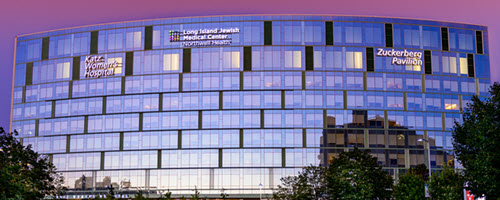|
|
|
|
|
|
|
|
|
|
|
|
Plastic Waste is Piling Up as the Search for Substitutes Continues
|
|
|
|
|
|
|
|
Today: As a global treaty to reduce plastic pollution inches forward, the hunt continues for alternative materials; Orsted shares crash after sale of U.S. wind project halted; GM to import EV batteries from China's CATL.
|
|
|
|
|
|

|
|
More than 400 million tons of plastic are produced each year, and only about 10% of that gets recycled. Photo: Joseph Cress/Associated Press
|
|
|
|
|
|
Welcome back: The world’s biggest consumer goods companies are trying out alternatives to plastic as pollution worries mount, but finding packaging that is truly sustainable without being cumbersome is proving to be a tall order, WSJ Pro Sustainable Business's Clara Hudson writes.
Dallas-based PlantSwitch, for example, makes substitutes for plastic straws, containers, cutlery, plates and bowls. It does so by blending rice husks—the sheath that protects a rice kernel—with a bio-based polymer synthesized by micro-organisms to create a resin that can be molded into the final product. The company’s salad bowls can be found at Walmart and Whole Foods through a partnership with Taylor Farms, which makes salad kits.
E-commerce giant Amazon.com has signed a deal with paper company Ranpak Holdings for paper liners to replace the plastic pillows that protect packages. Paper packaging is much more frequently recycled than plastics, and can also biodegrade fairly quickly.
Arcos Dorados, the largest independent McDonald’s franchise, is using a plastic alternative made from trash to make food trays in Brazil. The trays are produced by an Israeli company called UBQ Materials that uses household garbage including banana peels to make everything from car parts to flower pots. But the material isn’t food-safe, which is why it is used for trays with a paper or cardboard lining.
|
|
|
|
|
Content from our sponsor: Deloitte
|

|
|
Northwell Leader: ‘Resource Stewardship is a Smart Way to Practice Medicine’
|
|
Northwell Health sustainability leader Dr. Teresa Amato describes how their governance structures help prioritize sustainability initiatives that reduce costs and emissions and improve patient outcomes. Read More
|
|
|
|
|
|
|
|
|
Orsted Shares Crash After Halting of U.S. Wind Project Sale
|
|
|
|

|
|
Orsted said the rights issue will strengthen its capital structure. Photo: tom little/Reuters
|
|
|
|
|
|
Orsted stock crashed this morning, after the wind-power giant said it needed to raise billions of dollars from shareholders following President Trump’s crackdown on the sector, the WSJ's Dominic Chopping reports.
The Danish renewables company said it was unable to sell part of of a wind farm off the coast of New York, blaming “recent material adverse development in the U.S. offshore wind market.” It plans to raise $9.4 billion through a rights issues.
Orsted has struggled with supply-chain bottlenecks, higher interest rates and trouble getting tax credits after making an aggressive push into U.S. offshore wind. The planned partial sale of the Sunrise Wind project in New York was part of a divestment program to free up funds for its best projects.
|
|
|
|
|
“Given the unprecedented regulatory development in the U.S., we have made a comprehensive assessment of all options.”
|
|
— Orsted Chair Lene Skole
|
|
|
|
|
|
|
|
GM Will Import EV Batteries From China’s CATL Despite Tariffs
|
|
|
|

|
|
A Chevrolet Bolt EV parked at a charging station. Photo: Justin Sullivan/Getty Images
|
|
|
|
|
|
General Motors plans to import batteries from China, despite steep tariffs imposed by President Trump, to power its second-generation Chevrolet Bolt electric vehicle, a supply-chain Band-Aid for a company that touts extensive investments in U.S. battery making, the WSJ's Christopher Otts writes.
GM will buy the batteries from China’s Contemporary Amperex Technology, one of the world’s largest battery makers, for about two years until the Detroit automaker and its Korean partner LG Energy Solution can stand up their own manufacturing of the lower-cost batteries in the U.S., according to people familiar with the plan.
The new Bolt is set to start rolling off the line at the company’s Fairfax Assembly Plant in Kansas late this year, reaching dealerships in 2026 as GM’s most affordable electric vehicle. GM said the arrangement is a stopgap as it works to manufacture its own lower-cost batteries made with lithium iron phosphate or “LFP” chemistry.
|
|
|
|
|
|
|
|
|
|
|
|
|
|
|
|
-
Silver Lake invests $400 million to tackle data-center power bottleneck. (WSJ)
-
Hedge funds flip on green energy and start betting against oil. (Bloomberg)
-
Fortescue turns to China for $2 billion loan to fund decarbonization as U.S. “steps back” from green investments. (ESG Today)
-
U.S. startup Lyten to buy bankrupt European battery maker Northvolt. (Reuters)
-
Energy secretary says past climate reports will be “updated.” Why researchers are alarmed. (Barron's)
-
The humbling of green Europe. (Economist)
-
New tool standardizes comparison of “Scope 4” emissions claims. (Trellis)
-
Trump’s AI plan a shift “from guardrails to greenlights.” (Dow Jones Risk Journal)
|
|
|
|
|
|
|
|
|
|
|
|
|
|
|
|